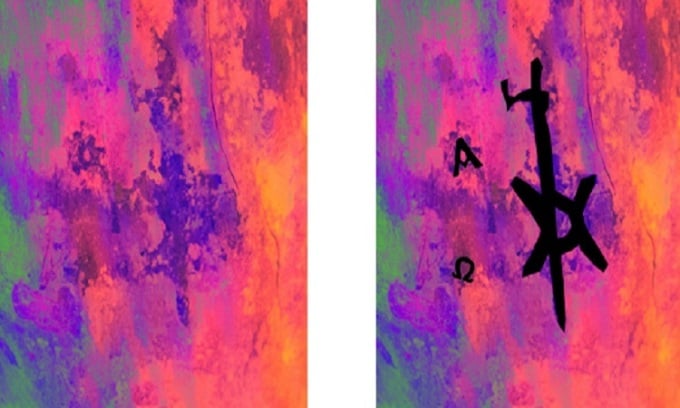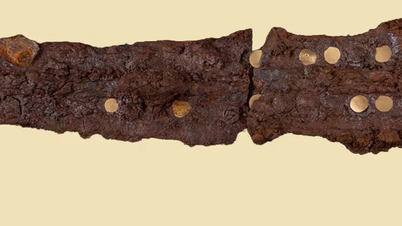A team of researchers discovered a skeleton tattooed with symbols representing Jesus in an ancient cemetery in Sudan.

Tattoos on the remains' feet. Photo: Kari A. Guilbault
Scientists in Sudan have discovered a tattoo related to Jesus on 1,300-year-old remains excavated in a cemetery near a medieval monastery, Live Science reported on October 22. This is the second such tattoo found from Nubia, said the Polish Center for Mediterranean Archaeology (PCMA) at the University of Warsaw, which conducted excavations and research at the Ghazali site. Nubia is a region that includes modern-day Egypt and Sudan.
Located on the man's right foot, the tattoo features the Chi-Rho symbol along with the Greek letters alpha and omega. The Chi-Rho symbol is composed of the Greek letters 'chi' and 'rho', which form the abbreviation for Jesus. The abbreviation was created around 324, when Constantine became emperor of the Roman Empire. Alpha and omega are the first and last letters of the Greek alphabet, representing the belief that God is the beginning and end of all things.
The location of the tattoo on the right foot is interesting, as Jesus may have been crucified in this position during his execution, according to Robert Stark, a bioarchaeologist at PCMA, and Kari Guilbault, a tattoo expert at Purdue University in Indiana. Stark and Guilbault were part of the research team that discovered and analyzed the tattoo.
While the tattoos suggest the person in the grave was a Christian, the team is not sure if they were a priest. He was not buried in the same cemetery as the priests at the monastery, but in a cemetery used by people in the nearby community. Carbon dating suggests he lived between 667 and 774 AD. At this time, Christianity was the dominant religion in the region and was widespread. The deceased likely died between the ages of 35 and 50.
An Khang (According to Live Science )
Source link


![[Photo] Urgently help people soon have a place to live and stabilize their lives](/_next/image?url=https%3A%2F%2Fvphoto.vietnam.vn%2Fthumb%2F1200x675%2Fvietnam%2Fresource%2FIMAGE%2F2025%2F12%2F09%2F1765248230297_c-jpg.webp&w=3840&q=75)















![[Photo] Deep sea sand deposits, ancient wooden ship An Bang faces the risk of being buried again](https://vphoto.vietnam.vn/thumb/402x226/vietnam/resource/IMAGE/2025/11/13/1763033175715_ndo_br_thuyen-1-jpg.webp)
































































![[Photo] General Secretary To Lam works with the Standing Committees of the 14th Party Congress Subcommittees](https://vphoto.vietnam.vn/thumb/402x226/vietnam/resource/IMAGE/2025/12/09/1765265023554_image.jpeg)

































Comment (0)